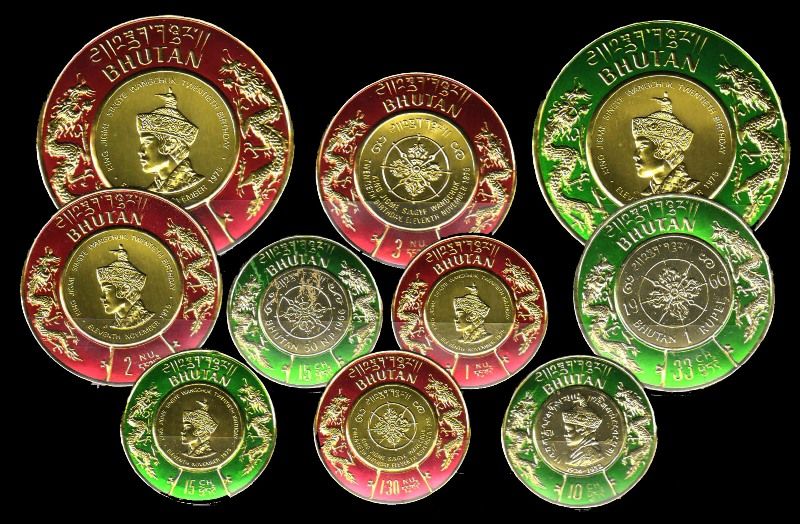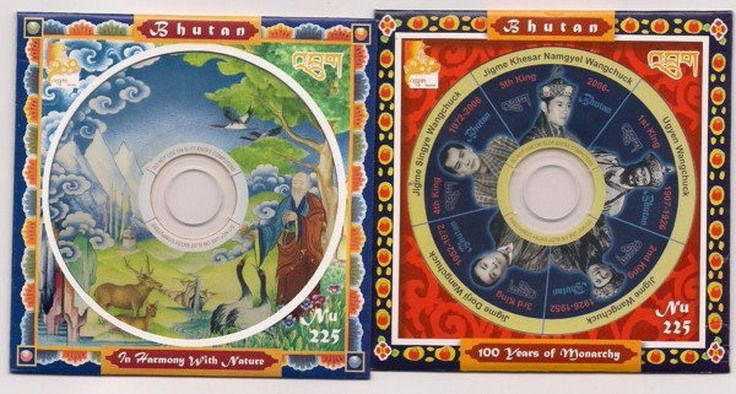Bhutan, a small landlocked country sandwiched between India and China, barely attracts attention in the international arena.
Its postage stamps, however, are the most sought after by philatelists.
Vinyl record stamps of Bhutan.

Bhutan did not have an organized postal system until the early 1960s.
In 1962, the country issued its first postage stamp.
One person who was instrumental in helping Bhutan launch postage stamps was the wealthy American businessman Burt Kerr Todd.

Todd had no idea how difficult it was to reach Bhutan until he reached India.
But Todd and is friends persevered and finally made it into the capital where they received a royal welcome.
Circular coin stamps made of foil.

Todd fell in love with Bhutan, its friendly, hospitable people and its traditional centuries-old customs.
Todd made some investigation and realized that issuing stamp was indeed a great way to raise money.
This was followed by a set of triangle-shaped stamps showing the Abominable Snowman.

Serious philatelists dismissed them as gimmicks, but general collectors lapped them up.
In 1967, Todd came up with the worlds first three-dimensional stamps on the theme of space exploration.
The 3D stamps set the philatelic world on fire, and hundreds of thousands of sets were sold.

After the success of the 3D stamps, Burt released a slew of remarkable designs.
The bas-relief stamps depicted famous sculptures and personalities in molded plastic.
Then, there were the Religious Banner series in 1969 printed on silk.

The most unusual of them all were the so-called talking stamps.
The talking stamps are the most sought after today, with a single piece selling for hundreds of euros.
Since 1996, the Bhutan Post has been designing its own stamps and they continue to innovate.
In 2008, sale of stamps generated a profit of 8 million ngultrum (US$74,000).
That figure in 2015 was already 13 million (US$196,000).